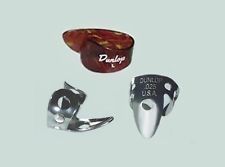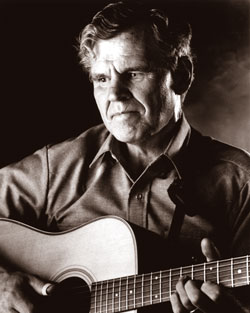Doc Watson Guitar Lesson
Although not a blues guitar player in the strictest sense, Doc Watson's finger picking technique calls for special attention.
The relaxed sounds of this very popular Doc Watson Guitar Lesson - Deep River Blues and the intricacy of Doc's finger style creates a formidable item of guitar playing which is tough to re-produce. It is this complex, easy feel which possibly leads to a lot of teachers to over simplify Doc's method, or worse, make it too complex utilizing two or several fingers of the picking hand.
In actual fact, Doc picks with simply his thumb and one finger of his right hand to create this impressive feeling - let's take a look at how he does it.
I hope you like the guitar lesson! There are a couple of wonderful videos
on Youtube of Doc Watson performing Deep River Blues.
Never mind the fact that Doc didn't write Deep River ( it was published and sung by the Delmore Brothers, a Country singing partnership, who recorded it as 'I've Got The Big River') Doc undoubtedly made it his own.
Doc's Right Hand Picking Technique
Re-working the song in a Travis picking way introduced delicate
complexities, and yet produced a really relaxed feel. Many acoustic
guitarists have a variation of Deep in their list of songs, and I perform this song routinely in public.
However, not many of us perform it in really the same way as Doc.
Mostly, this is due the dexterity required. A lot of guitarists try to
accommodate the complex picking technique ( as they see it ) by using
two or more fingers on the right hand.
The resulting sound can be
impressive, but doesn't really reflect accurately what Doc does.
Other individuals over-simplify the approach, which is a bit of a
shame. In reality, Doc's approach on Deep River IS simple, but it's the
sheer dexterity that floors us.
Did Doc Use One Picking Finger Or More?
Doc simply plays with one finger on his right hand. As you can imagine, this one finger (his first) moves fairly quickly and the thumb also moves across to assist with the syncopation now and again. The use of just one finger was the primary factor which struck me concerning Doc's picking technique.
 It reminded me of the ragtime blues guitar of Reverend Gary Davis,
who additionally used one right hand finger. 'One is all you need', he
is noted to have said! Like Watson, the Reverend's picking hand thumb
may leap across to the treble strings. Each guitarist's thumb and
finger acted quite independently, with the thumb often breaking out of
the set alternating bass form to create single string runs or
syncopated off-beats.
It reminded me of the ragtime blues guitar of Reverend Gary Davis,
who additionally used one right hand finger. 'One is all you need', he
is noted to have said! Like Watson, the Reverend's picking hand thumb
may leap across to the treble strings. Each guitarist's thumb and
finger acted quite independently, with the thumb often breaking out of
the set alternating bass form to create single string runs or
syncopated off-beats.
The embedded online video beneath
features a complete 15 minute guitar lesson for Deep River Blues. It was initially
posted in two parts. The first portion examines the one finger process
and the basic picking structure, leading on to approaches that we might
use to approximate Doc's sound, in case we can't manage to play
exactly as he does! (This in all probability means most of us!)
The 2nd part will take a glimpse into the 'fiddly bits'. This is where Doc's thumb produces some fascinating sounds by moving out of it's bass pattern. We look at a break and also end-tag variations.
How To Play Travis Guitar In The Doc Watson Style
How To Play Guitar Using Finger Picks - Better Than Bare Fingers?
- They are a natural amplifier
- Produce a clear and sharp sound
- Fit more easily between the guitar strings
- Protect the fingers
 Strike any guitar string with a bare finger and then do the same thing wearing a stainless steel or plastic pick. The sound is much louder and generally lasts longer. This is because a hard surface (the pick edge) is striking the hard surface of the string. This can be a great advantage when recording for example, or playing in noisy bars. As well as being louder, finger picks also produce a cutting sound that can be heard through traffic noise, or in other noisy places, so great for busking. When combining picks with a naturally loud guitar such as a National Steel (à la Floyd Council) the loudness is dramatically increased.
Strike any guitar string with a bare finger and then do the same thing wearing a stainless steel or plastic pick. The sound is much louder and generally lasts longer. This is because a hard surface (the pick edge) is striking the hard surface of the string. This can be a great advantage when recording for example, or playing in noisy bars. As well as being louder, finger picks also produce a cutting sound that can be heard through traffic noise, or in other noisy places, so great for busking. When combining picks with a naturally loud guitar such as a National Steel (à la Floyd Council) the loudness is dramatically increased.- They wear out the strings fast!
- Make too much noise
- Sounds Metallic
- You can lose them!


